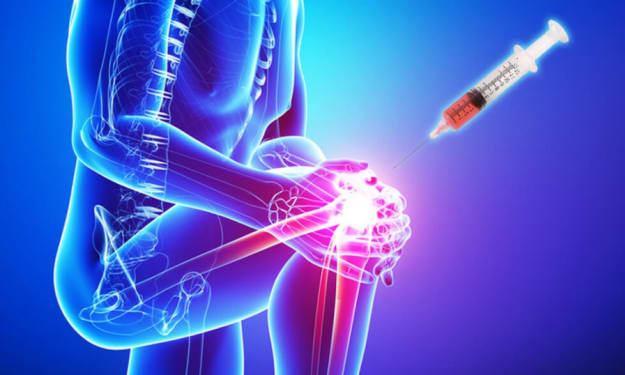14 Natural Pain Relief Products
Top Surprising Natural Painkillers

Natural pain relief options have been a popular way to supplement traditional medical treatment for chronic pain. These natural pain relief options can help reduce your pain. They are inexpensive and easy to use.
You can try a variety of these options to find the one that works for you.
1. Get in touch with your inner endorphins
Your body produces endorphins, which are natural painkillers. Endorphins work by binding to opioid receptors in the brain to reduce pain perception. These natural hormones can be stimulated to produce more of them, which can help you feel pleasure and satisfaction. Your body will naturally release endorphins from any activity that keeps your blood pumping for a prolonged period. However, it is important to consult your doctor before you start a new exercise program.
2. Get support and understanding.
Chronic pain is often invisible, unlike a broken leg or other visible signs of injury. Chronic pain is often a deeply personal and lonely experience. We encourage you to seek out people who are supportive and understanding if this is you. You may find a support group for chronic pain in your community. You may prefer to communicate online. Perhaps you start by looking for help in a forum or online. Then, you will realize that you have much to offer and can help others.
3. Take in the great outdoors.
Vitamin D can be produced by the body through sun exposure of 10 to 15 minutes per day. Some studies also show that vitamin D supplementation can reduce chronic pain. However, this is not the case in other studies and further research is required. However, getting out in the sun can improve your mood and help you to maintain a healthy immune system.
4. Warm water is best.
Warm water can be used to relieve muscle spasms and muscle pain, as well as other types of arthritis. Warm soaks can be done in a variety of ways, such as a warm tub, whirlpool tub, or pool for water therapy.
5. Dry heat therapy is an option.
There are many heat therapy options available for pain. You can try a heat wrap or adhesive back wrap to provide continuous low-level heat. To reduce the chance of injury or burns, make sure to read all directions before applying heat therapy products.
6. Use essential oils.
Many cultures have valued essential oils for their analgesic properties. Essential oils can be used in many ways. Some people inhale them (aromatherapy), while others use them in massage oil to provide therapeutic massages. Many oils have been shown to be analgesic when combined with traditional treatments, such as peppermint oil and rosemary. However, more research is required. To reduce your risk of allergic reactions or toxic effects, make sure you read the label before using essential oil.
7. Massage therapy is a great option.
High-quality therapeutic massage stimulates blood flow, decreases muscle tension, and promotes feelings of well-being. A massage therapist can manipulate soft tissues, such as muscles, tendons, and ligaments. There is not a consensus on how massage therapy can reduce pain or what type of massage is best. You may need to experiment with different approaches to discover which one works for you.
8. Stretch and let go.
Stretching the soft tissues around the spine (the muscles and ligaments as well as the tendons) can be beneficial for almost everyone. Your back was designed to move, so if you have pain in your back, it can cause your back pain to worsen.
9. Relax and meditate.
There are many ways to meditate, some more complex than others. You can start by finding a sound that you like, but does not have any meaning. Then, close your eyes and sit down. Repeat the sound in your head. Notice when your thoughts wander and then return to your sound. Feel your pain. Notice it and then return to your sound. Meditation can be enjoyed for as little as a few minutes or up to 30 minutes.
10. Imagine you are in a better place
Guided imagery is a form of meditation that involves listening to and internalizing therapeutic suggestions in order to improve your mood and reduce pain signals. A study of 28 women suffering from osteoarthritis pain found that half of them listened to a 10-to-15-minute recorded script twice daily, which guided them through muscle relaxation techniques. The guided imagery group saw statistically significant improvements in mobility and pain levels in 12 weeks, as compared to the control group.6You can learn guided imagery with a practitioner, on your own, using online videos, apps for phones, or CDs.
11. Increase the intake of anti-inflammatory foods in your diet
Some people may find that anti-inflammatory foods, such as fruits, vegetables, and unsaturated fats, whole grain, beans, nuts, fish high in omega-3 oils, can help reduce pain. Both the DASH and Mediterranean diets contain many anti-inflammatory foods, which have been shown to be associated with lower disease risk and better cardiovascular health. Some research has shown that anti-inflammatory foods may be able to lower the pain associated with obesity.7Osteoarthritis and More research is required.
12. Laugh more often
One study found that laughter can increase pain tolerance. The highest level of positive effects was seen when people laughed with one another. Laughter can have many benefits, including increased blood circulation and oxygen intake and a rise in endorphins (the body’s natural pain killers). A whole movement called laughter yoga allows people to enjoy the many benefits that laughter has without needing to have a reason to do so. It just encourages laughter for its own sake.
13. Get enough sleep to be restorative
To manage pain and promote healing, it is important to get enough sleep. It's also crucial to use a variety of sleep aids. Deep sleep is promoted by regular exercise that exhausts the body. Meditation, visualization, and other psychological techniques are all ways to help you fall asleep and stay asleep.
14. Ice it
Ice and/or cold gel packs can be applied to the affected area to reduce inflammation and pain. Ice therapy should be limited to 15-20 minutes, with at least two hours rest between each application. To reduce skin damage, keep a layer of ice between your skin and the ice.
These natural pain-relieving tips can be used as a guideline for managing chronic pain. Talk to your doctor if your pain is severe or affects your ability for daily tasks.
About the Creator
Mithun Debnath
Blogger, Project Manager, Business advisor, SEO firm Director and Digital Marketing Expert. Helped 5,000+ Sites to grow their business.
Life is short, so I also manage to squeeze in horse riding, car racing and playing with geeky gadgets.






Comments
There are no comments for this story
Be the first to respond and start the conversation.